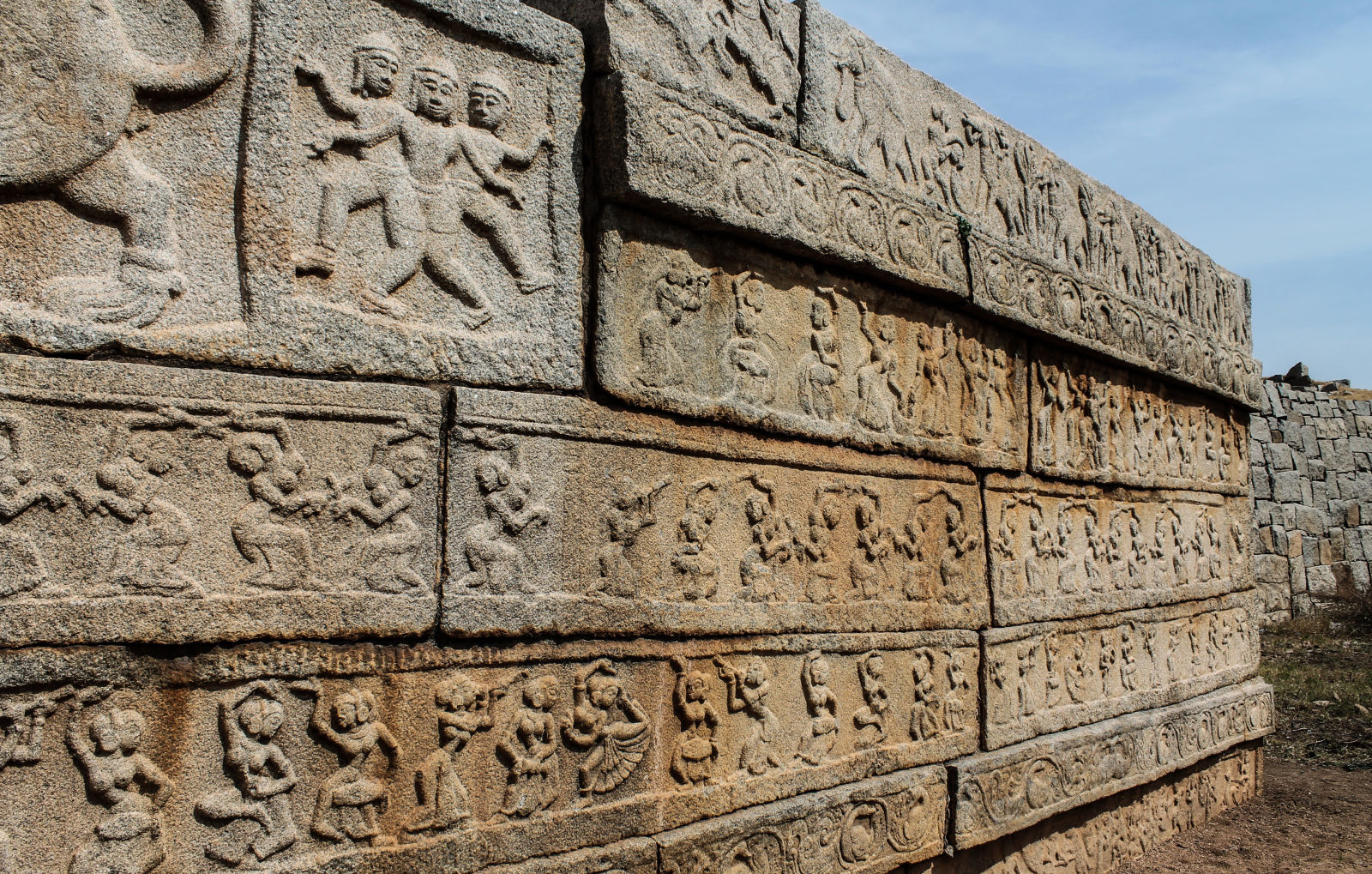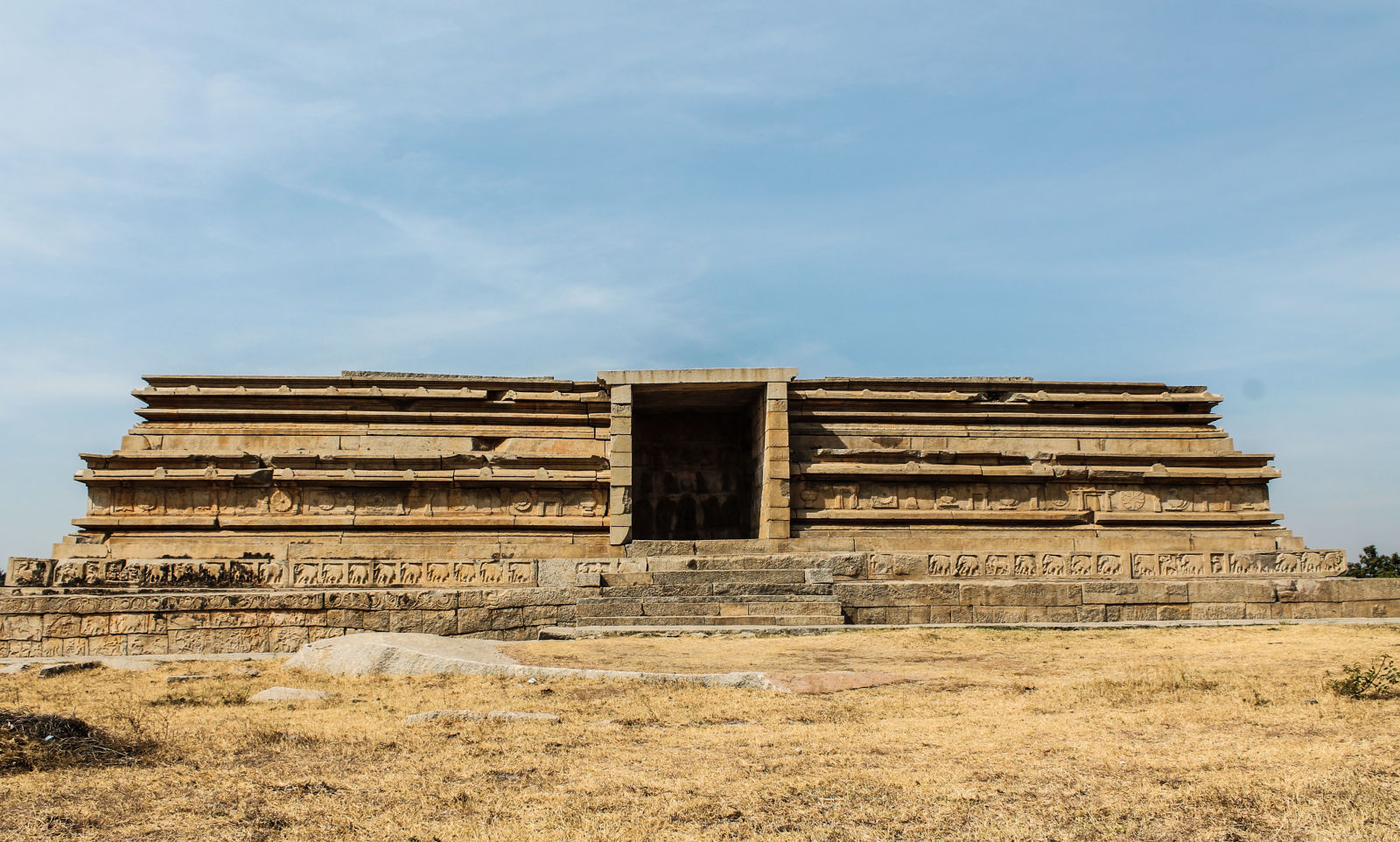Of A Grandeur Long Forgotten
Published on: 17/09/2018
Published on: 17/09/2018

Carvings depicting the Mahanavami Festival procession – Photograph: Snigdha Sharma

The King’s Entrance of the Mahanavami Dibba – Photograph: Snigdha Sharma

Snigdha Sharma is a writer currently based in New Delhi, India. Her travel writing goes beyond mere description and captures the essence of a place and its inhabitants. Originally from Kurseong, Darjeeling, her deep-seated interest in the arts and non-fiction influence her narratives.
Craft Calling: Traditional Lambani Arts and Crafts and the Sandur Kushala Kala Kendra
The Path of a Downfall: Movements that Led to the Collapse of the Vijayanagara Empire
Hampi Ruins in the 1900s: Stellar Photographs From A Forgotten Historical Text
North Karnataka’s Threesome — Badami, Aihole, & Pattadakallu
Hampi Ruins in the 1900s — The Gateways into the City
The cute little denizens of the Kamalapura Palace, Hampi
From the Kitchens of Evolve Back – Jallad Roti | Akki Roti
From the Kitchens of Evolve Back – Qubani ka Meetha and Shahjahani ka Meetha
From the Kitchens of Evolve Back – Murgh-e-Lazeez
From the Kitchens of Evolve Back – Nizami Machali ka Salan
From the Kitchens of Evolve Back – Dum ki Nalli
From the Kitchens of Evolve Back – Anapa Ginjala Pulusu
From the Kitchens of Evolve Back – Raan-e-Kamalapura
From the Kitchens of Evolve Back – Baghara Baingan
From the Kitchens of Evolve Back – Natukodi Pulusu
From the Kitchens of Evolve Back – Tondekai Palya
From the Kitchens of Evolve Back – Royala Igaru
From the Kitchens of Evolve Back – Koli Chuttada
From the Kitchens of Evolve Back – Karibelle Cutlet
The Battle of Talikota and the Sacking of Hampi
From the Kitchens of Evolve Back – Kori Ghee Roast
Harihara & Bukka: founders of the Vijayanagara Empire
The Battle of Raichur: The Beginning of the End